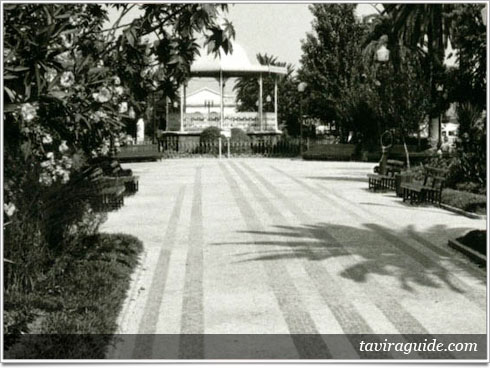
Recent research carried out in Tavira’s Municipal Historic Archives brought to light new data on the history of the city. A document found in the archives reveals that another bandstand arrived in Tavira, prior to the current bandstand which can be seen in the centre of Tavira public Garden.
The bandstand that can be see today inside Tavira Garden, which has been the object of extensive studies and which is widely known, was part of the municipal executive’s plan for the construction of a public promenade along the right bank of the Gilão river, together with the purchase and setting up of a public lavatory, benches, street lamps and the respective columns. We further know, as far as the bandstand in the Picture is concerned, that it was commissioned to the Ouro Foundry and that it was transported by ship from the ironworks in Porto to Olhão, where it arrived at the beginning of 1890.
Years earlier, more specifically in the winter of 1882, the 4th Gunner Battalion, a military contingency force that comprised a musical formation, formally thanked the municipality, at the time headed by José Dionel da Franca Matos, for the financial contribution they had provided for the construction of a bandstand on the Constituição Square (Praça da Constituição). The contribution, amounting to twelve thousand réis, proved to be unnecessary for the execution of the work as, according to Manuel Cipriano Ribeiro, Commander of the 4th Gunners’ Battalion, the amount due had been obtained, in the meantime, through the support of private sponsors. The amount in excess was returned to the Municipality which, given the unexpected contribution, invested this amount in the setting up of street lamps. No other particulars regarding the artistic nature or physical structure have been found, as we only had access to the above mentioned document after the conclusion of the building of this recreational and cultural equipment in November 1882 on the Constitution Sq., today the República Sq. (Praça da República), although this does not mean that it was located on this square which is Tavira main square, as the designation of the toponymy was extensive to the former public promenade. The research has not been concluded, but we are led to believe, from recently gathered documentation, that the musical shows performed in Tavira in the 19th century, took place on more than one bandstand.